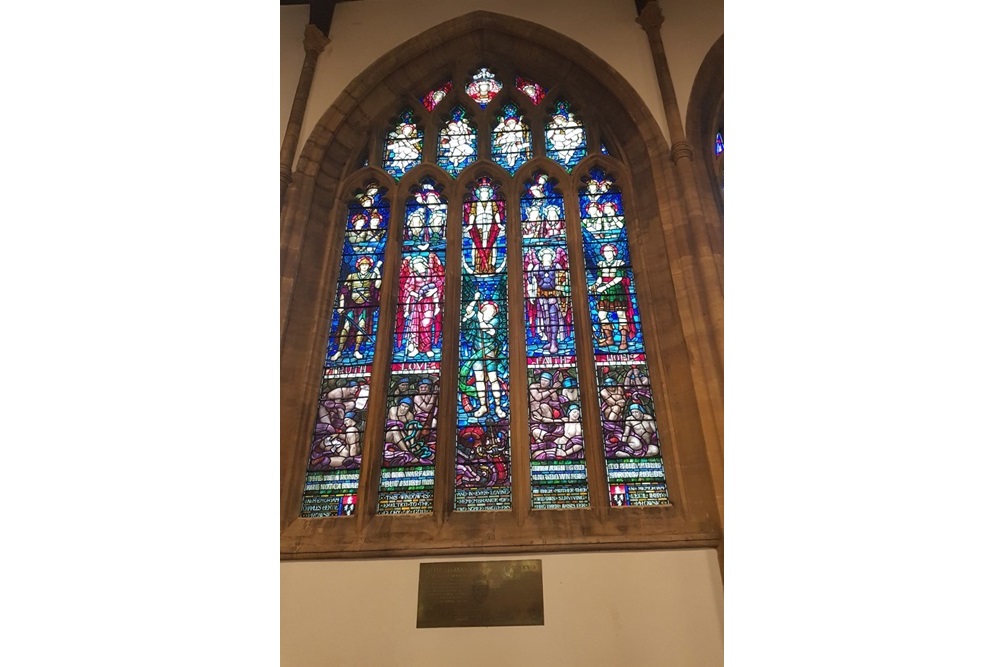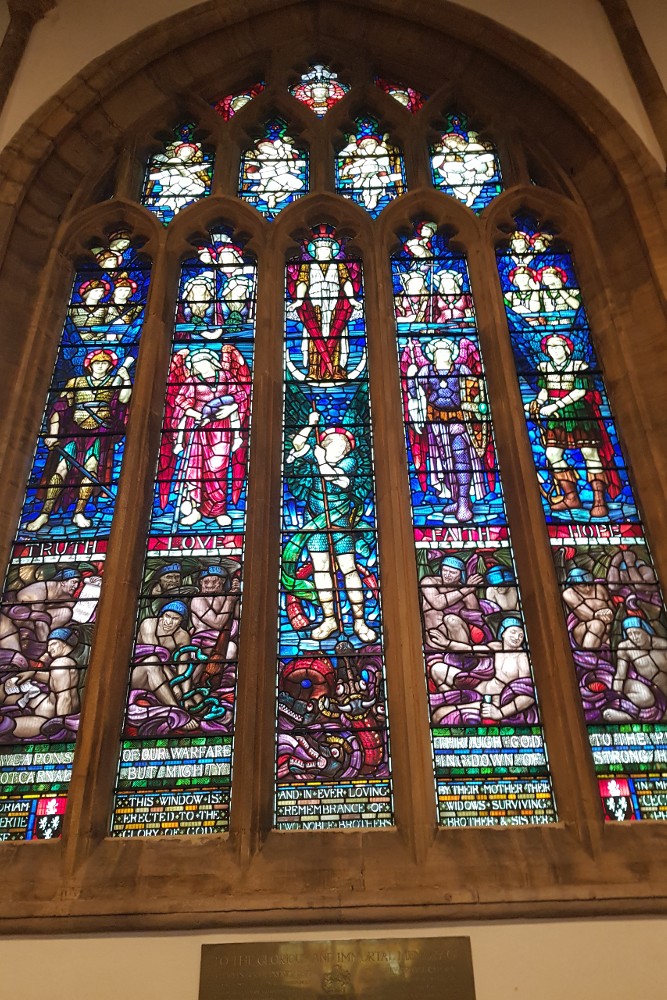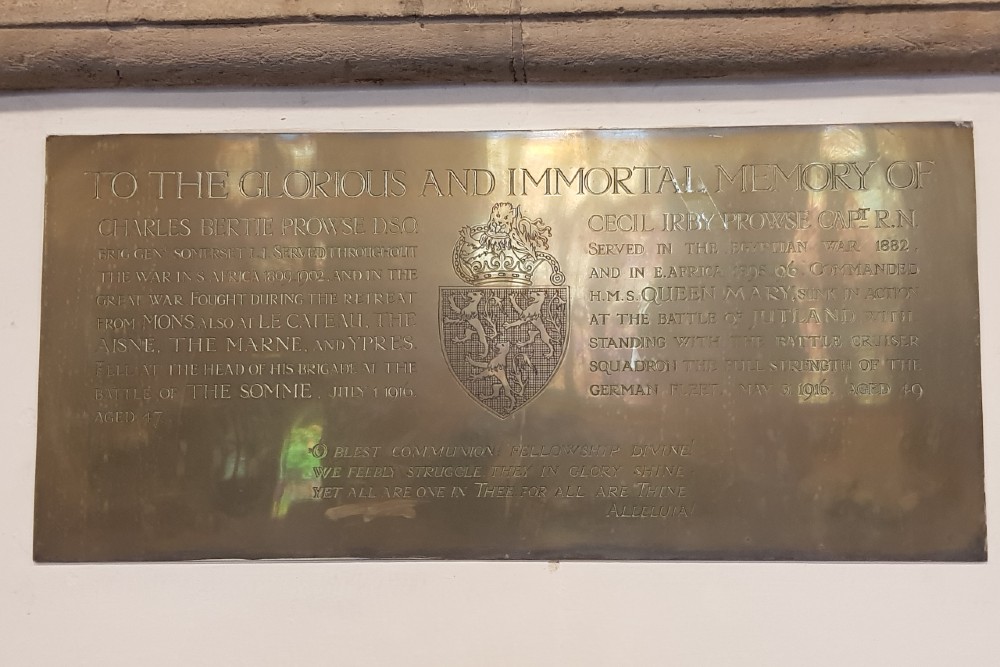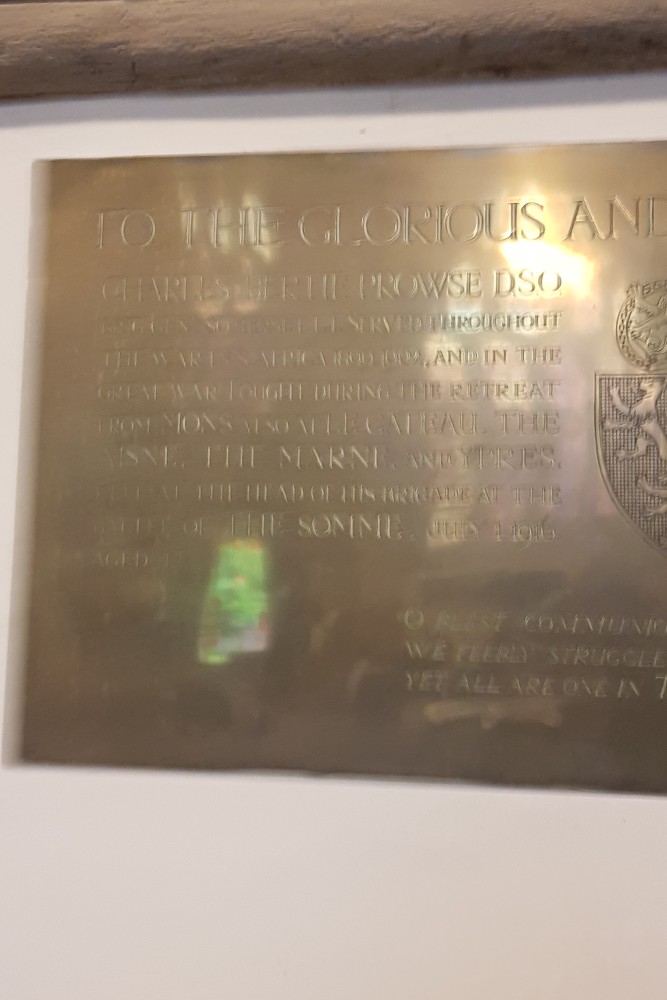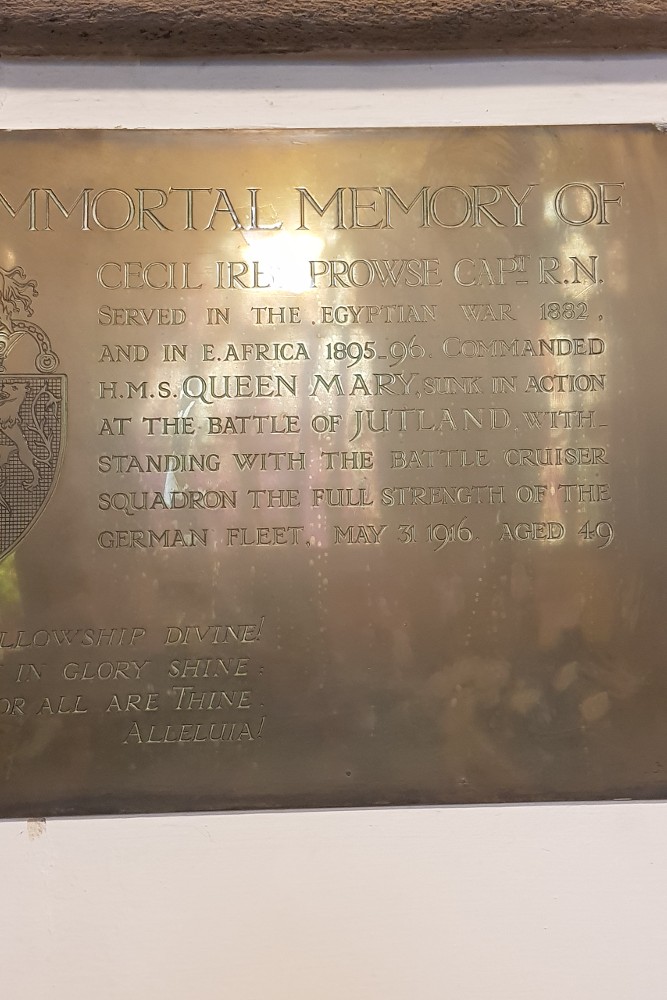Memorial Prowse Brothers
Stained Glass window in St John the Baptist Church dedicated to the two high ranking Prowse Brothers who were born near Yeovil and died within weeks of each other at two of the biggest Battles of World War 1.
Window reads:
The weapons of our warfare through God to the pull
are not carnal but mighty-ing down of strong holds
This window is erected to the Glory of God and in ever loving remembrance of two noble brothers by their mother, their widows surviving brothers & sisters
Plaque reads:
"TO THE GLORIOUS AND IMMORTAL MEMORY OF
Charles Bertie Prowse DSO
Brig Gen Somerset L.I. Served throughout
the war in S. Africa1899-1902. And in the
Great War fought during the Retreat
from Mons also at Le Cateau, the
Aisne, the Marne and Ypres.
Fell at the head of his brigade at the
Battle of the Somme July 1 1916.
Cecil Irby Prowse
Served in the Egyptian War 1882
and in E, Africa 1895-96. Commanded
HMS Queen Mary, sunk in action
at the Battle of Jutlland with-
standing with the Battle Cruiser
Squadron the full strength of the
German Fleet. May 31 1916. Aged 49
' O Blest communion fellowship divine
we feebly struggle they in glory shine
Yet all are one in thee for all are thine
Allelluia'
----------------------------------------------------------------------------------------------------------
Charles Bertie Prowse. DSO (23 June 1869-1July 1916). Joined the militia battalion of Prince Alberts Regiment in 1889 before transferring to a regular battalion in 1892. Served in the Second Boer War (1899-1902) under Field Marshall Roberts and was twice mentioned in despatches. He was present at the Relief of Ladysmith and at the Battles of Spion Kop, Vaal Krantz and Tugela Heights.
At the outbreak of WW1 he was a major in the Price Albert Regiment and fought in the Retreat from Mons, the Battle of Le Cateau, the First Battle of the Marne and the First Battle of Ypres and Ploegsteert in 1914.
On the 1st July 1916 Prowse was leading the 11th Infantry Brigade (part of 4th Infantry Division) in their attack on the German lines between Redan Ridge Redoubt and Quadrilateral north of Beaumont Hamel. Whilst the attack as a whole was a failure, there was some success at the Quadrilateral, and Prowse believing it had been secured attempted to to move his headquarters forward and was hit by German machine gun fire and died later in the afternoon. He received the Distinguished Service Order on 3 July 1916 and initially buried in Vauchelles-les-Authie. Prowse and other burials were consolidated at Louvencourt cemetery near the site of his death. The original wooden cross is now in St Mary Magdalene church Taunton.
Whilst leading the regiment at Ploegsteert a farm in the area was named Prowse Point after him and is now the site of Prowse PointCommonwealth Graves Commission Cemetery.
--------------------------------------------------------------------------
Cecil Irby Prowse (26 Sept 1866- 31 May 1916). Enlisted in the Royal Navy on 1 Jan 1890 and served in the Anglo=Egyptian War of 1882 and also the Anglo-Zanzibar War 1896. He served as Commander of HM ships Amphitrite, Jupiter, Resolution, Powerful and shore base Nelson in the pre WW1 years. Promoted Captain in December 1910, he commanded HMS Hannibal, Suffolk, Duke of Edinburgh before assuming command of the battlecruiser Queen Mary on 13 October 1914 as part of the First Battle Cruiser Squadron taking part in the action after the Bombardment of Scarborough, Hartlepool and Whitby.
During the Battle of Jutland she was engaged by the German ships Derfflinger and Seydlitz and hit several times causing her forward magazine to explode sinking the ship with the loss of loss of 1266 personnel and only 20 survivors.
Captain Prowse is commemorated on panel 10 of the Portsmouth Naval memorial, England.
The explosions aboard HMS Invincible and HMS Queen Mary during the early part of the battle prompted the comment from Admiral of the Fleet David Beatty, 'There seems to be something wrong with our bloody ships today'.
Do you have more information about this location? Inform us!
Source
- Text: Sharky Ward
- Photos: Anthony (Sharky) Ward
Nearby
Museum
Point of interest
- Fleet Air Arm Memorial Church - Yeovilton
- Memorial St Mary Major - Ilchester
- Royal Naval Air Station Yeovilton - Yeovilton
Monument
Cemetery
- Commonwealth War Graves Yeovil Cemetery - Yeovil
- Commonwealth War Graves St Mary Magdalene New Churchyard - Barwick
- Commonwealth War Grave St James Churchyard - Preston Plucknett
